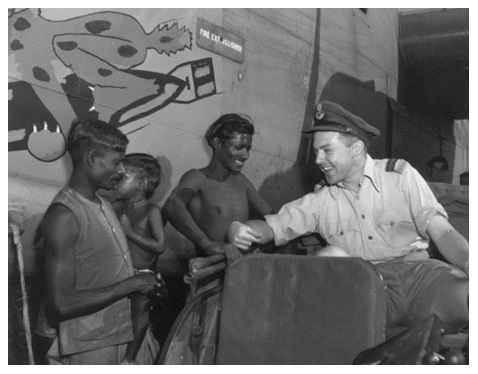
The 79th fighter Squadron was a WWI Aero Squadron [flying training] formed in Texas on 22 Feb. 1918, and demobilized on 15 November 1918. It was activated on 1 April 1933, and became the 79th Pursuit Squadron 6 December 1939. It provided trained personnel for other squadrons and helped in pilot training. From 1940 until the United States entered WWII, 7 Dec. 1941, they flew antisubmarine patrols from Oakland, California, from where they submitted a request to Walt Disney for a squadron insignia.

This is the Walt Disney Burbank, artists design, [Hank Porter] sent to the unit who painted a Wildcat riding a Barracuda fish, which represented the West Coast antisubmarine patrols of the then titled 79th [Composite Squadron]. American intelligence knew that Japanese submarines were up and down the west coast of the United States, possibly operating from secret bases in Canada and Mexico, and that was the reason for the antisubmarine patrols. The year 1940, was also the period of time where Walt Disney artists were creating hundreds of Army, Navy, and Air Force unit insignia for both the Allies at war in Europe, and the still neutral United Sates. This original design is on file at Burbank, California, and would never became the official insignia. The composite squadron became the 79th Fighter Squadron on 15 May 1942, and arrived at Kings Cliff, England, on 11 January 1943. The new official insignia became a Tiger’s face, with one paw grasping a red and black lightning bolt, emitting six red flashes. The Disney insignia was forgotten, and never flew combat with any American unit during WWII.


Somehow, the Disney insignia made its way to Salbani, India, and was painted as nose art on Liberator Mk. VIII, serial EW258, in 1944. It flew at least 37 operations [missions for Americans] in RAF No. 356 Squadron. The nose art replica painting was donated to Airdrie Nose Creek Valley Museum in 1995.

This image was taken in December 1944, one of three PL60046-PL60049 and PL60051, showing RCAF WO1, H. C. Irvine taking with the local people.
Note
This is an update from another research done by Clarence Simonsen when Barry Kennedy shared these pictures from his father’s collection.
The updated story is here.


